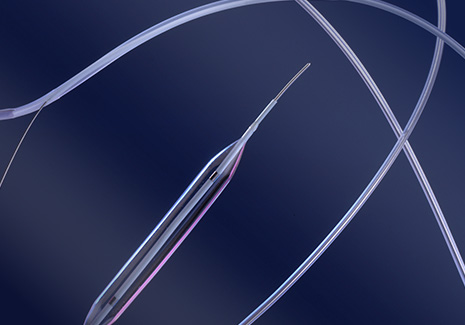Case Study Five: Medical
An easy-to-use cable for medical ultrasound diagnostic equipment delivering clear image projection
Case Study Five: Medical
An easy-to-use cable for medical ultrasound diagnostic equipment delivering clear image projection
Solutions are uncovered through the synergistic collaboration between cross functional teams. This is particularly rewarding in the medical field when pioneering life-saving technology is created which has a direct patient benefit.
In pregnancy scans and health check-ups, healthcare professionals use ultrasound diagnostic equipment to conduct internal examinations of patients. This technology makes it possible for medical staff to perform safe internal checks without causing pain or exposing patients to unnecessary radiation.
Junkosha has been providing cables for medical diagnostic equipment and pioneering this life-saving technology for over 30 years.

When we first began manufacturing cables for ultrasound diagnostic equipment, our brief was to create strong, thin, flexible cables which would provide clear images. When making a diagnosis, healthcare professionals place the sensor on the patient’s body, rotating it and moving it backwards and forwards multiple times. A strong but flexible cable is therefore needed to accommodate for this movement, whilst a high-density signal is required to enable doctors to view images of the inside of the body. At times, a patient’s life depends on an accurate diagnosis, so above all these machines including their cables must be completely reliable.
To create thin, durable cables we employed our advanced knowledge of fluoropolymer technology, which we used as a cable dielectric. To project images more clearly, we began to work on a low-capacitance cable design. We experimented with a range of technologies to create a variety of prototypes. Through these, we explored how to minimize the dielectric thickness, create a dielectric pore structure, and stabilize the quality of shield technology.
To achieve the flexibility required we used a specialised cable twisting method, weaving at least 100 ultra-fine coaxial cables together. If just one of those strands broke, achieving an accurate image would be impossible, so we also worked to make them incredibly strong. Eventually, this led to us designing an ultra-fine coaxial cable which was perfectly suited to this diagnostic equipment.
Although the creation process was complex, thanks to Junkosha’s trademark teamwork we were able to respond rapidly to our client brief - creating four prototype samples in just a few days. We followed this up with a detailed production plan and brought together a cross-company functional team who pooled their expertise to support the production process.
The first cable we developed was the “AWG#32”, which had a conductor diameter of 0.24mm. We have spent 30 years building on that first product and this has led to us creating the “AWG#50” cable, which has a conductor diameter of 0.025mm. These cables, which we can produce en masse, have approximately the same thickness as a single human hair.
The demands for image accuracy become greater every year, so we’re always striving to advance our products and meet the challenges posed by the medical field. It is incredible knowing that our high-precision cables could make a huge difference in people’s quality of life and provide much-needed peace of mind to the medical staff who rely on them.



